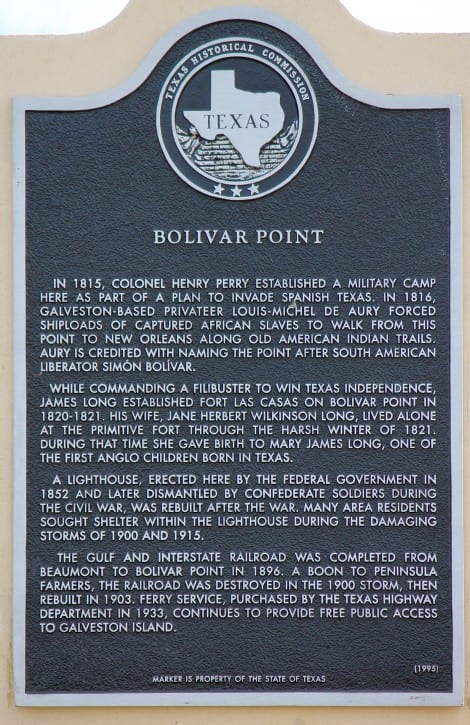
In 1815 Colonel Henry Perry established a military camp here as part of a plan to invade Spanish Texas. In 1816 Galveston-based privateer Louis-Michel de Aury forced shiploads of captured African Slaves to walk from this point to New Orleans along old Indian Trails. Aury is credited with naming the point after South American liberator Simon Bolivar.
While commanding a filibuster to win Texas independence, James Long established Fort Las Casas on Bolivar Point in 1820-21. His wife, Jane Herbert (Wilkinson), gave birth to a daughter, Mary James, in December 1821 at the fort. Mary James Long is often referred to as the first Anglo child born in Texas.
A lighthouse, erected here by the Federal government in 1852 and later dismantled by Confederate soldiers during the Civil War, was rebuilt after the war. Many area residents sought shelter within the lighthouse during the damaging storms of 1900 and 1915.
The Gulf and Interstate Railroad was completed from Beaumont to Bolivar Point in 1896. A boon to peninsula farmers, the railroad was destroyed in the 1900 storm, then rebuilt in 1903. Ferry service, purchased by the Texas Highway Department in 1933, continues to provide free public access to Galveston Island.

 Posted in
Posted in 
























